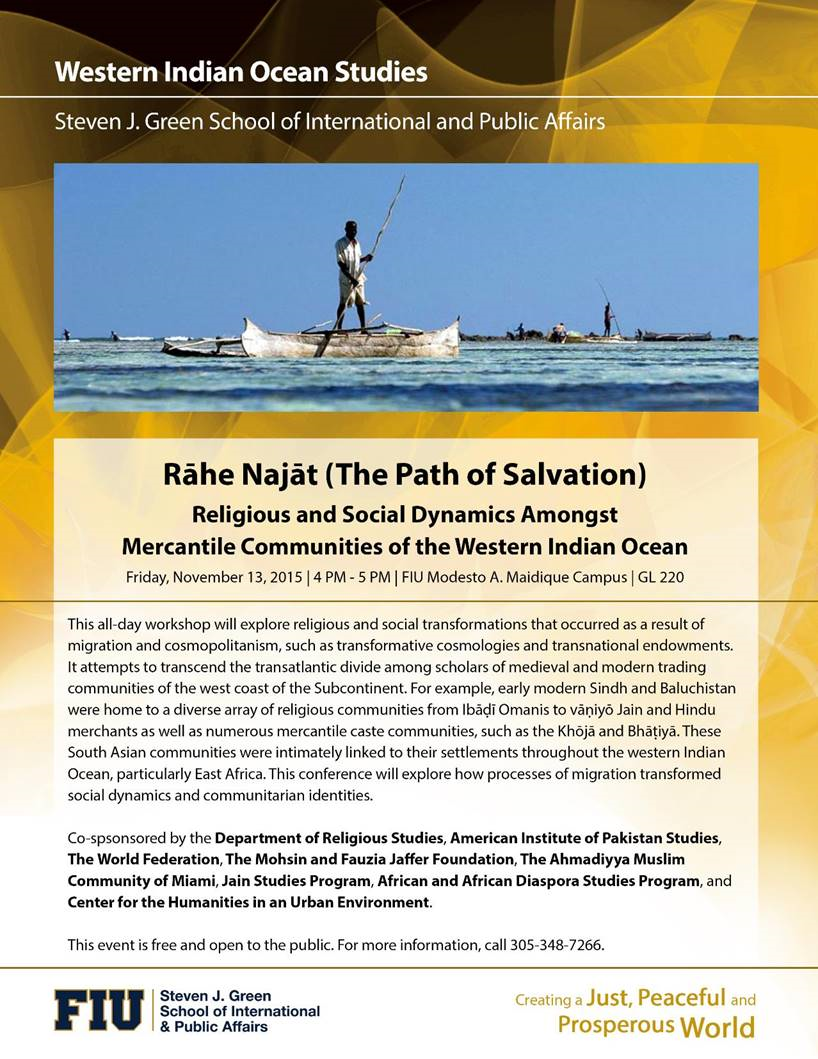Dr. Kamran Asdar Ali, Co-Editor-in-Chief of Critical Pakistan Studies, was recently featured in a video where he presented his aspirations for Critical Pakistan Studies to be a high-standard, first-rate, and top-tier interdisciplinary source of information on Pakistan. Critical Pakistan Studies is a new open-access journal published with the support of Cambridge University Press that tackles broader interdisciplinary issues in addition to Pakistan and Pakistanis.
You are here
Workshop at Florida International University
Rāhe najāt (the path of salvation): Religious and Social Dynamics Amongst Mercantile Communities of the Western Indian Ocean
FLORIDA INTERNATIONAL UNIVERSITY
WESTERN INDIAN OCEAN STUDIES WORKSHOP
Conveners: Iqbal Akhtar and Steven Vose, School of International and Public Affairs at FIU
Venue: Florida International University, Miami, Florida (USA)
Date: 13 November 2015
Co-sponsors: Florida International University, the American Institute of Pakistan Studies, The World Federation, The Mohsin and Fauzia Jaffer Foundation, The Ahmadiyya Muslim Community of Miami
Agenda: A two-day conference with a public keynote bringing together interdisciplinary scholars in the humanities, generally defined, in order to present and discuss the medieval and modern histories of merchant communities of the western Indian Ocean. The output of the conference will be an edited volume or a special issue of a journal and key lectures made publically available via the FIU web portal.
Theme: This gathering will explore religious and social transformations that occurred as a result of migration and cosmopolitanism, such as transformative cosmologies and transnational endowments. This conference attempts to transcend the transatlantic divide among scholars of medieval and modern trading communities of the west coast of the Subcontinent. For example, early modern Sindh and Baluchistan were home to a diverse array of religious communities from Ibāḍī Omanis to vāṇiyō Jain and Hindu merchants as well as numerous mercantile caste communities, such as the Khōjā and Bhāṭiyā. These South Asian communities were intimately linked to their settlements throughout the western Indian Ocean, particularly East Africa. This conference will explore how processes of migration transformed social dynamics and community identities.
Some of the questions posed by this conference include: What were the changing dynamics of port-hinterland relationships of caste communities? How were the religious identities of these merchant communities formed and influenced by communal interactions with each other in the precolonial period? How did the oceanic caste communities develop distinct forms of praxis? What of the kāḷā pāṇī (‘black water’) taboo, was it operative? If so, for whom? How has the modern loss of ancestral scripts and dialects transformed their communal identities today? How and to what extent were literatures transported?

